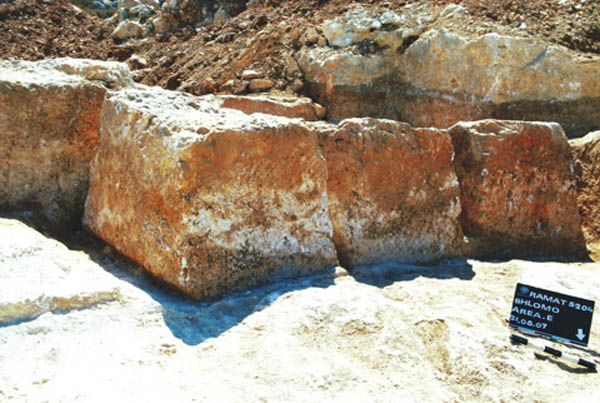
The quarry that produced the enormous limestone ashlars for Herod the Great’s massive Temple Mount enclosure wall has been discovered in Jerusalem, about 2 miles northwest of the site. The 1.25-acre site was uncovered in September 2007 during a salvage excavation to prepare for the construction of a girls’ elementary school in the Ramat Shlomo neighborhood.
The quarry was identified as Herodian based on the high-quality limestone, the large size of the stones (up to 26 feet long!) and the recovery of coins and pottery that date the site’s use to the first century A.D.
The quarrying process required first carving deep vertical channels around four sides of each block. Then, iron cleaving stakes were hammered into the bottom of the block to create a crack at the base (one such stake was found during the excavation). According to one theory, workers placed timbers tightly in the channels and poured water over them, causing them to expand; the increasing pressure eventually forced the blocks to break from the bedrock below, separating cleanly along the fissure that had been created at the base.
Already a library member? Log in here.
Institution user? Log in with your IP address.

